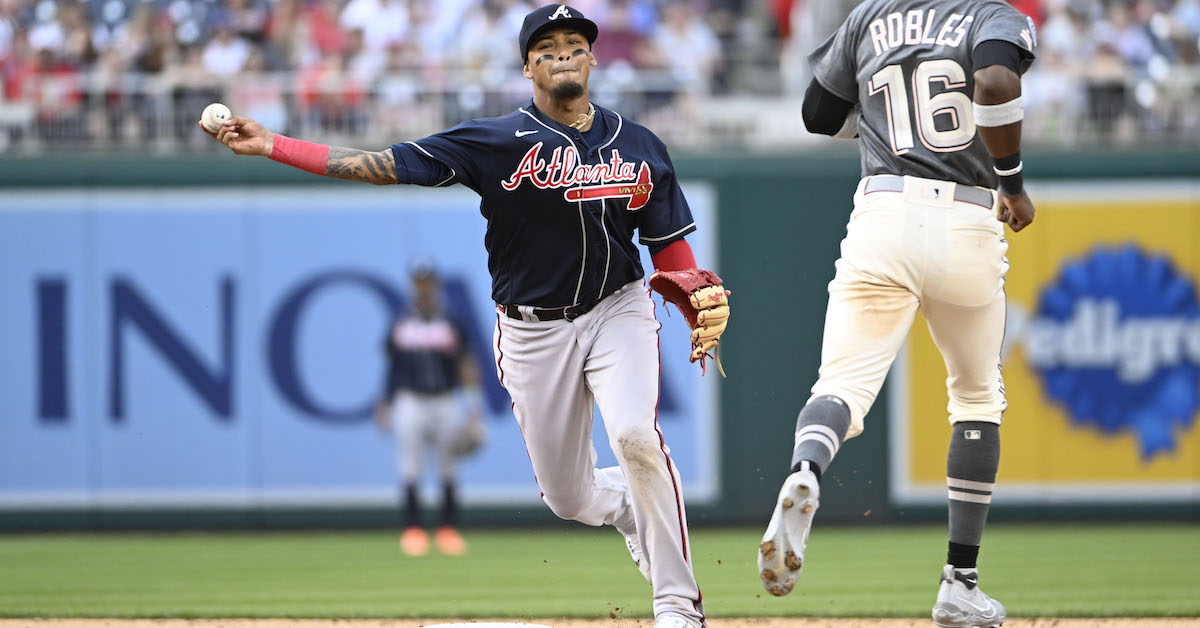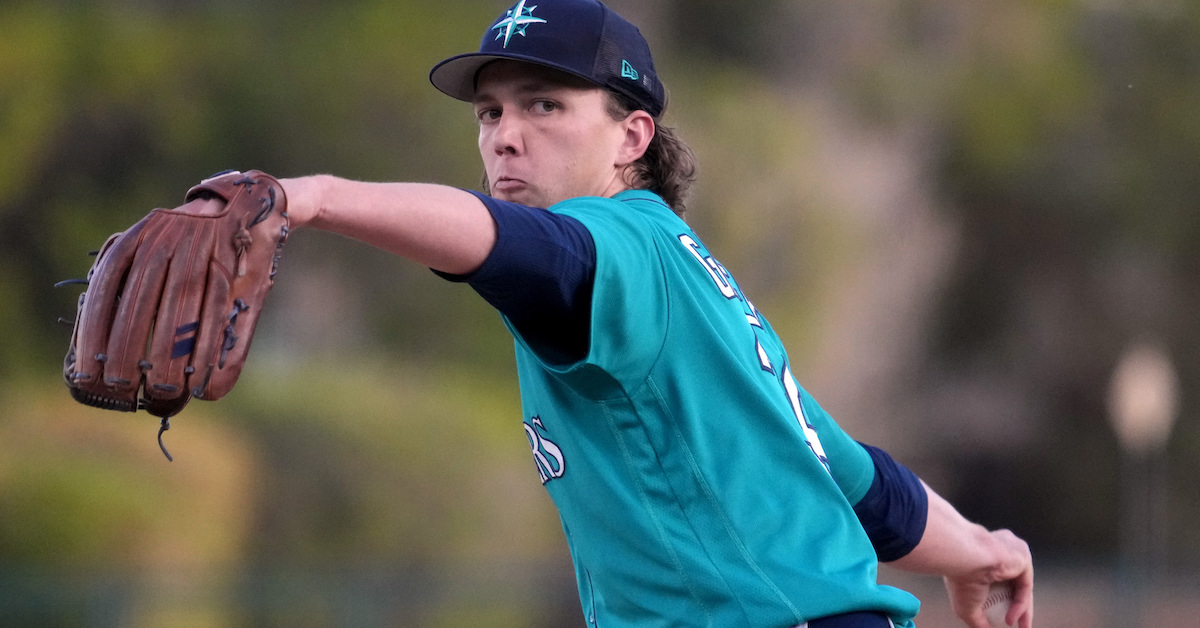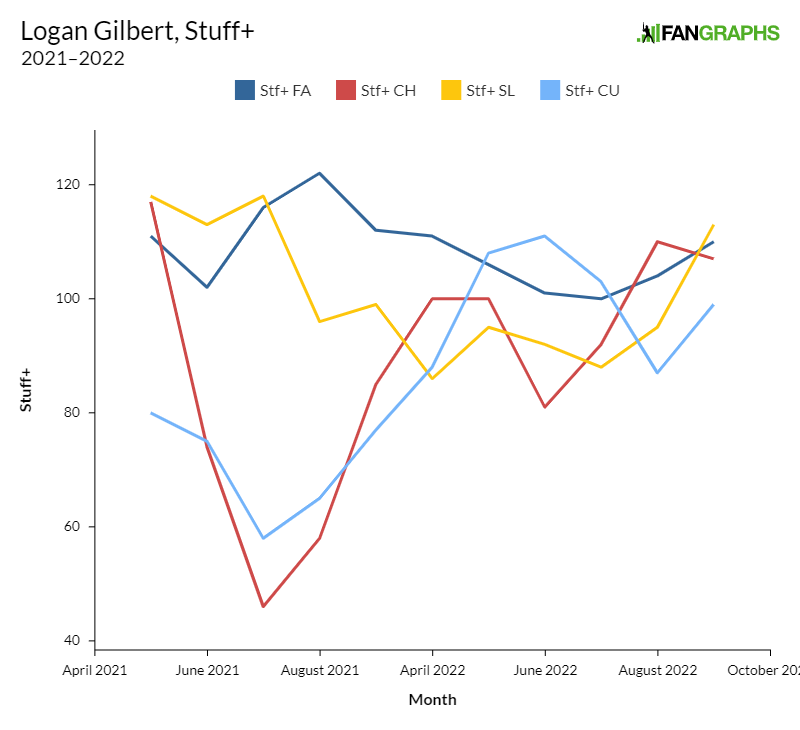Making Sense of the Braves’ Shortstop Situation

On Opening Day, when the Braves took the field after batting in the top of the first inning, everyone you’d expect ran out to their usual positions. Well, almost everyone. Taking his position as the starting shortstop was Orlando Arcia, the recipient of a three-year contract extension announced earlier that day. The deal is worth $7.3 million with a club option for a fourth year that includes a $1 million buyout and replaces the previous two-year contract extension he had signed after the 2021 season.
If you hadn’t followed the Braves’ shortstop saga over the offseason, seeing Arcia in the Opening Day lineup might have been a surprise. So let’s recap: Dansby Swanson, the everyday shortstop since his debut in August 2016, played out his final year under team control last year and entered free agency. Atlanta didn’t show much interest in re-signing him once he hit the open market, and he wound up inking a massive seven-year deal with the Cubs.
The heir apparent to Swanson was Vaughn Grissom, who had been called up midseason to fill in for an injured Ozzie Albies even though he hadn’t played above Double-A yet. He impressed with a 165 wRC+ through his first 100 plate appearances in the big leagues, but that mark slid to just 35 over his final 50 trips to the plate. His late swoon was so bad that the Braves ended up benching him in three of their four postseason games. Still, entering spring training, the expectation was that Grissom would get every opportunity to win the job for good.
For his part, Arcia had appeared in just 104 games for the Braves after they acquired him from the Brewers in April 2021. He played four different positions in the infield and outfield, essentially acting as a utility man for Atlanta — a pretty significant step backwards after beginning his career as Milwaukee’s starting shortstop. Through his first five seasons, he put up a .244/.295/.366 slash line (a 71 wRC+) and accumulated 1.9 WAR, and after joining the Braves, he spent a lot of time riding the shuttle between Triple-A and the majors. Still, he did show some improvement at the plate in Gwinnett, posting a 129 wRC+ in 322 PA with his best-ever ISO at .233.
Those improvements at the plate carried over to the next year, where Arcia spent nearly all of his time in the big leagues as the Braves’ utility man. In limited action, he posted a 104 wRC+, a career-high for him. The biggest difference for him was a jump in batted ball quality:
| Year | EV | FB+LD EV | Barrel% | Hard Hit% | GB% | ISO | wRC+ |
|---|---|---|---|---|---|---|---|
| 2016–20 | 87.0 | 91.1 | 3.3% | 30.1% | 52.0% | 0.121 | 71 |
| 2021 | 88.2 | 90.7 | 3.2% | 38.1% | 50.8% | 0.111 | 49 |
| 2022 | 90.7 | 93.7 | 7.5% | 42.5% | 45.9% | 0.172 | 104 |
His hard-hit rate improved by more than four points, up to 42.5%, and his barrel rate reached 7.5%, both career highs. He also cut his popup rate to 5.6% and simultaneously increased his fly ball rate. By elevating his higher quality contact but avoiding mis-hits, he was able to generate much more productive results on his balls in play, with average exit velocities on his fly ball and line drive contact that were particularly notable. Instead of a light-hitting, defense-first shortstop, Arcia’s batted ball contact started looking a lot more dangerous.
His plate discipline also took a big step forward. With the Brewers, Arcia had developed a very aggressive approach at the plate which didn’t go well with his middling bat-to-ball skills. Last year, he reduced his swing rate to 44.7%, a drop of nearly eight points over the year prior, and easily a career low. His contact rate didn’t budge, but simply taking more pitches allowed him to run a 9.0% walk rate and maintain his decent strikeout rate.
Despite those improvements at the plate, it still came as a surprise to see Arcia win the Opening Day gig. Grissom had an excellent spring, and a surprise contender emerged in Braden Shewmake.
| Player | PA | H | K% | BB% | OPS |
|---|---|---|---|---|---|
| Orlando Arcia | 47 | 14 | 19.1% | 12.8% | 1.011 |
| Vaughn Grissom | 40 | 13 | 10.0% | 5.0% | .829 |
| Braden Shewmake | 35 | 10 | 17.1% | 5.7% | .823 |
There’s only so much stock you can put into spring numbers, though there is some evidence that exit velocity improvements can be a little sticky into the regular season. Unfortunately, based on the limited number of Statcast tracked batted balls, Grissom struggled with the same issues that undercut his seemingly impressive debut last year. In 15 tracked batted balls, his average exit velocity was just 86.5 mph — slightly better than the 84.6 mph he put up in the big leagues last year, but still well below league average. (Arcia only had eight tracked batted balls this spring, but their average exit velocity was 94.2 mph.) The lack of high quality hard contact last year was a major red flag for Grissom, who only managed a 34.3% hard-hit rate and put nearly half of his batted balls on the ground. A lot of his success was BABIP-driven, which is why he crashed so hard in September when balls stopped finding gaps in the defense.
Then there’s the problem of Grissom’s defense. He wasn’t great at second base while filling in for Arcia, costing the Braves five outs and three runs per OAA and RAA. At the more challenging defensive position, it’s likely those numbers would only get worse. Grissom worked out with Ron Washingon, who helped turn Marcus Semien’s defense into a strength, for three separate weeks during the offseason. But while there was some improvement, it wasn’t enough to warrant handing him the job out of the gate.
Shewmake’s emergence may have complicated the picture a little, but he wound up getting sent back to Triple-A for more development time. A decent defender already, the thing holding him back has been his lack of production at the plate. He has a good feel for putting the bat on the ball but no power whatsoever and limited on-base skills. His improvements this spring had coaches buzzing, but ultimately, he needs to prove it in the minors before getting a shot in the big leagues, and his ceiling may be that of a utility infielder anyway. After both Grissom and Shewmake were sent down to the minors, it’s telling that the former lined up at shortstop for Gwinnett, with the latter shifting over to second base.
Despite all this drama surrounding the position this offseason, Grissom could end up being the Braves’ shortstop of the future anyway. The extension Arcia signed doesn’t preclude the Braves from calling up him or Shewmake if they break out in the minors this year. But Arcia is only 28 years old, and it’s possible he’s in the middle of a mid-career breakout after his change of scenery. The improvements he’s made at the plate are a move in the right direction, and his defense is another positive at a premium position. If Grissom does get called up at some point to take the starting role, having Arcia as a utility man isn’t the worst outcome for the Braves.










